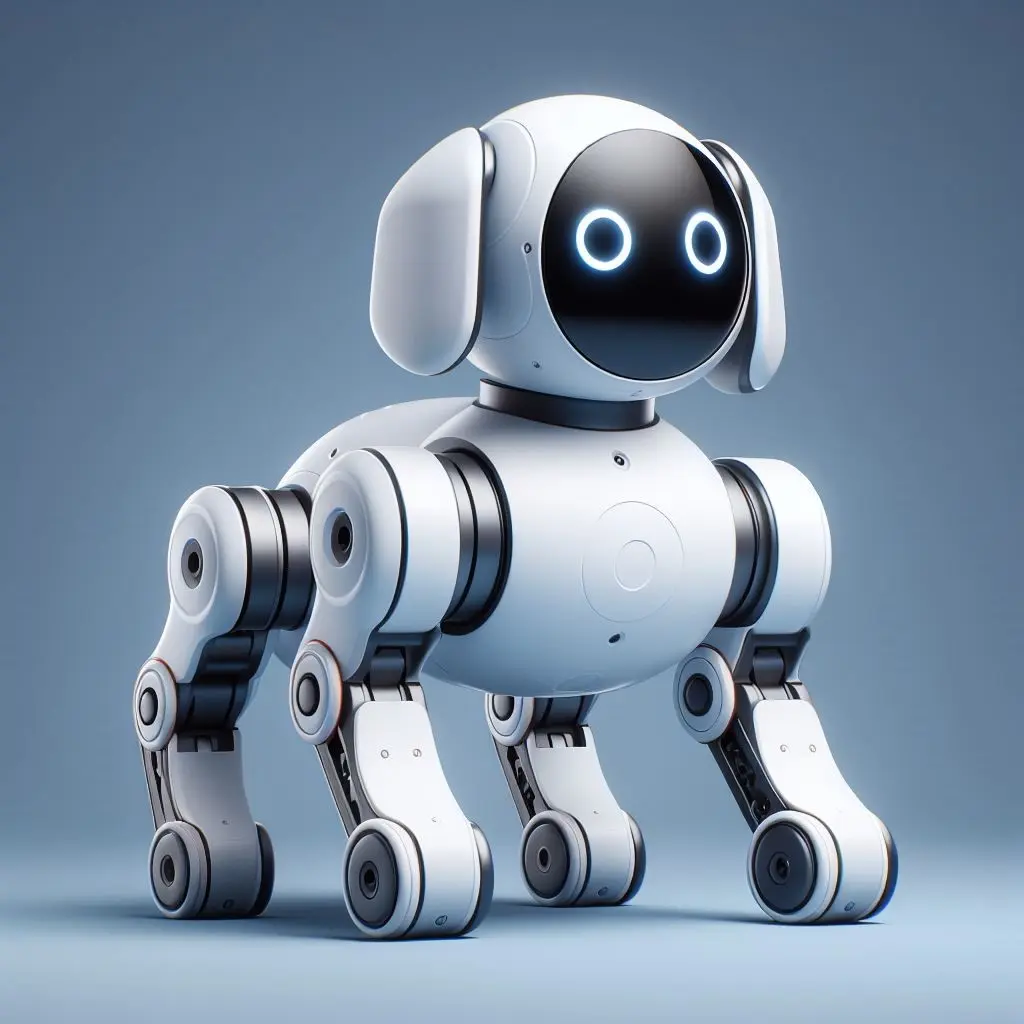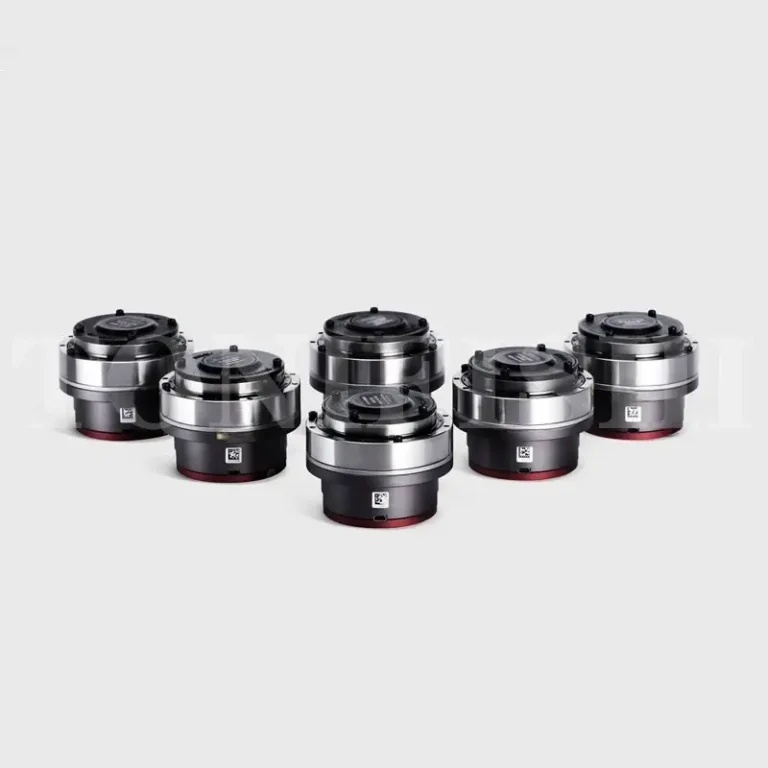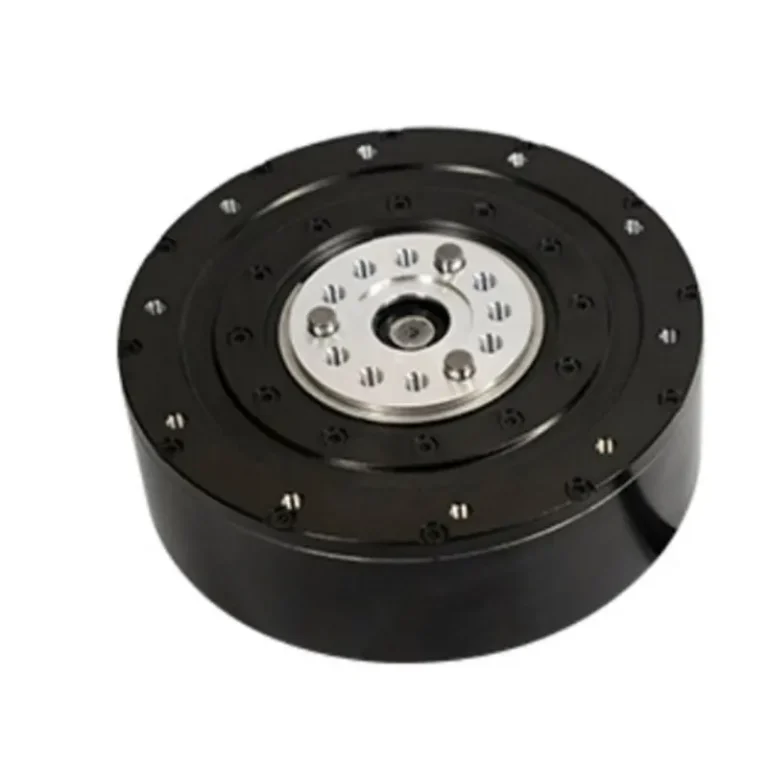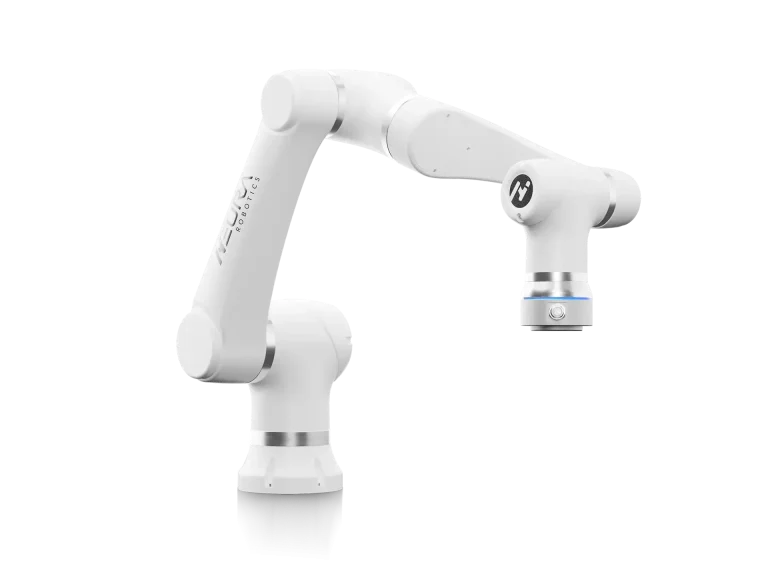Working Principle of QDD Motor Modules
The QDD (Quasi-Direct Drive) motor module ingeniously combines a brushless DC motor with a low-ratio planetary gearbox. This design philosophy fundamentally differs from traditional mechanisms that employ multi-stage high-ratio gear transmissions.
Inside a QDD actuator, the brushless DC motor directly drives the low-ratio planetary gearbox, without the need to transmit power through multiple gear stages. This quasi-direct drive design minimizes energy losses in the power transmission process, significantly improving the system’s power density and response speed.
Brushless DC motors inherently produce high rotational speeds, which can be reduced to the desired output speed and torque levels through the low-ratio planetary gearbox. Compared to traditional actuators with multi-stage high-ratio transmissions, QDD actuators exhibit significantly lower back-drivability resistance, resulting in superior reversibility and wider control bandwidth.
The key to achieving reversibility lies in the ability of external forces to relatively easily overcome the resistance of the low-ratio planetary gearbox, thereby reverse-driving the brushless motor’s rotation. This allows QDD actuators to better “sense” the external environment and respond more quickly to disturbances, improving the stability and precision of motion control.
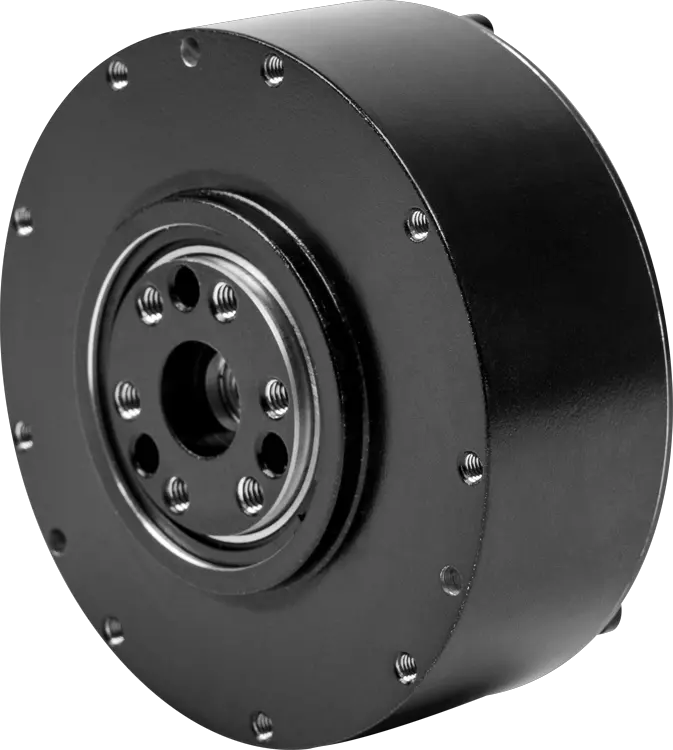
5 Unbeatable Advantages
- High Torque Output The low gear ratio design of QDD actuators enables the brushless DC motor to produce substantial torque at the output end. This advantage makes them highly suitable for applications requiring high acceleration and high thrust, such as highly dynamic robotic systems.
In the case of quadruped robots, each joint actuator requires sufficient torque output to quickly drive the mechanical limbs through acceleration, deceleration, and other motions. The high torque output of QDD actuators allows better execution of agile and flexible gait patterns, enabling quadrupeds to navigate complex environments with ease.
- High Responsiveness and Superior Back-drivability Due to the low-ratio planetary gearbox structure, QDD actuators exhibit significantly reduced back-drivability resistance. This not only enhances the actuator’s inherent reversibility, where external forces can easily overcome mechanical resistance and reverse-drive the motor’s rotation, but it also greatly increases the actuator’s response speed and control bandwidth.
For highly dynamic robotic systems that need to respond quickly to changes in the external environment, superior back-drivability and high response speed are crucial. For example, in the field of bipedal robots, robots need to continuously adjust their balance based on subtle changes in body posture, and fast response capabilities can significantly improve the stability of dynamic balance control.
- Low Reflected Inertia Traditional high-ratio gearbox mechanisms typically amplify the motor’s inherent inertia significantly at the output end, creating challenges for motion control. In contrast, the low gear ratio of QDD actuators results in lower reflected inertia at the output, making them easier to control and drive.
Low reflected inertia not only enhances the overall dynamic performance of the robot but also contributes to improved precision and stability of motion control. For applications that require high-precision trajectory tracking, such as precision robotic arms or biomimetic robotic hands, QDD actuators can deliver more accurate and smoother motion outputs.
- High Energy Transfer Efficiency Compared to high-ratio actuators with multi-stage transmissions, QDD actuators boast significantly higher energy transfer efficiency due to their compact structure and reduced power transmission stages. This is mainly attributed to the high mechanical transmission efficiency of the low-ratio planetary gearbox, which minimizes kinetic energy losses.
Improved energy transfer efficiency not only effectively extends the operating endurance of the robot but also reduces heat generation in the system, simplifying the overall cooling design. For robotic systems expected to operate for extended periods in harsh environments, this advantage is undoubtedly significant.
- Compact Structural Design Unlike traditional multi-stage gear transmissions, QDD actuators only require a single low-ratio planetary gearbox to transmit power, resulting in a more compact overall structure. This advantage not only enhances the system’s power density and space utilization but also allows greater freedom for optimizing the robot’s overall structure.
Undoubtedly, smaller and lighter actuators are more conducive to the performance of the robot as a whole. For applications with stringent volume and weight requirements, such as biomimetic micro-robots or robotic arms in aerospace, the compact design of QDD actuators is a significant advantage.
Widespread Applications in Robotics
Based on their outstanding performance characteristics, QDD actuators have been widely adopted in various dynamic robotic systems, playing a particularly important role in the field of legged robots.
- Quadruped Robots Quadruped walking robots are undoubtedly a classic application scenario for QDD actuators. For these robots, each leg joint requires fast and precise motion control to achieve agile, dynamic gait patterns reminiscent of biological animals, as well as highly dynamic balance adjustments.
The high torque output performance, high responsiveness, and low reflected inertia characteristics of QDD actuators perfectly meet the stringent joint control requirements of quadruped robots. Moreover, their advantages in energy efficiency and overall size and weight significantly enhance the endurance and overall performance of quadrupeds.
- Bipedal Robots Similar to quadruped robots, bipedal walking robots also have extremely high demands on joint motion control performance to achieve stable walking. Each ankle and knee joint must be driven quickly and precisely to facilitate dynamic gait adjustments and maintain body balance.
The high responsiveness, low reflected inertia, and superior back-drivability of QDD actuators make them well-suited for joint actuation in bipedal robots. These attributes not only enable precise and stable motion control but also contribute to enhanced energy efficiency and compact design, further improving the performance and versatility of bipedal robots.
- Robotic Arms The high torque output and low reflected inertia of QDD actuators also make them suitable for robotic arm applications. These characteristics contribute to improved payload capacity, dynamic performance, and control precision of robotic arms, enabling them to handle intricate tasks with high accuracy and dexterity.
Whether in industrial manufacturing, space exploration, or other fields, robotic arms equipped with QDD actuators can perform complex maneuvers and manipulations with greater agility and control, expanding the scope of their applications.
- Other Robotic Systems In addition to legged robots and robotic arms, QDD actuators find applications in various other robotic systems whenever fast and precise joint motion control is required. These include wheeled robots, snake robots, flying robots, and more.
The unique advantages of QDD actuators, such as high responsiveness, low inertia, and high energy efficiency, make them valuable assets in enabling agile and dynamic motion capabilities across a wide range of robotic platforms operating in challenging environments.
Design Considerations for QDD Actuators
When designing QDD actuators, several key factors must be carefully considered:
- Motor Selection The motor is the core component of a QDD actuator, and its performance directly determines the overall actuator performance. It is necessary to select a suitable brushless DC motor based on the application’s power, torque, and speed requirements, considering parameters such as power density, torque density, and speed range.
- Gearbox Design The gear ratio, efficiency, and structural design of the planetary gearbox significantly influence the performance of the QDD actuator. Trade-offs and optimizations must be made among torque output, response speed, energy efficiency, and other metrics to achieve the desired balance of characteristics.
- Thermal Management Since QDD actuators need to output high torque, they generate significant heat. Therefore, a well-designed cooling system is necessary to ensure stable operation under high loads and prevent premature failure or performance degradation due to overheating.
- Control System The high responsiveness and back-drivability of QDD actuators require the control system to have high bandwidth and precise position/force control capabilities. The design and tuning of control algorithms are also critical to fully leverage the actuator’s performance potential.
- Structural Design Although the compact structure of QDD actuators is an advantage, factors such as actuator mounting, maintenance accessibility, and protection against environmental influences must also be considered during the design phase to ensure reliable operation and ease of integration into the robotic system.
Overall, QDD actuators are favored in the field of dynamic robotics due to their outstanding performance characteristics. As technology continues to advance, QDD actuators will undoubtedly play an increasingly important role in enabling agile and dynamic robotic motion across a wide range of applications.
QDD motor module Integrated lightweight high performance (zhinno.com)

